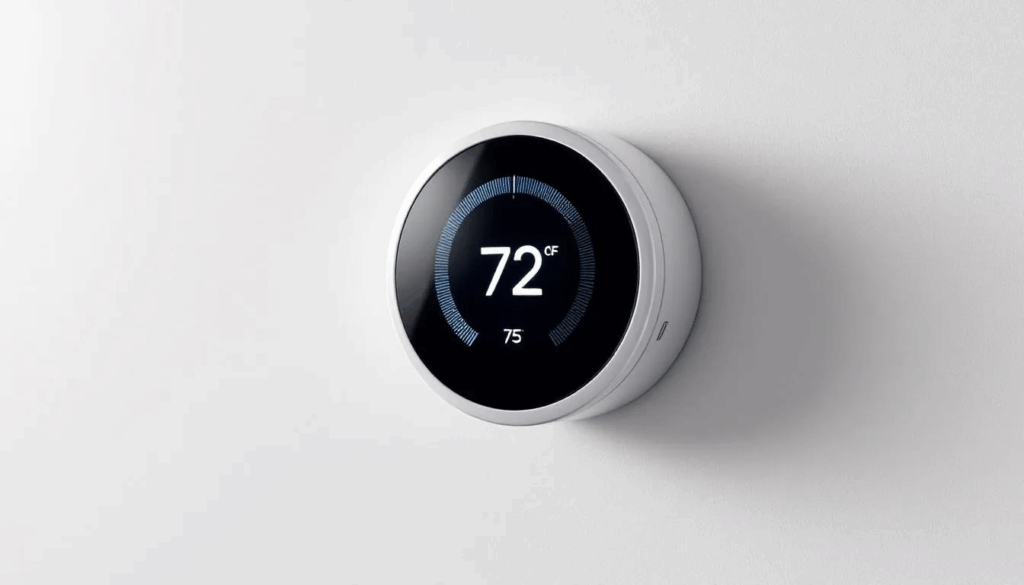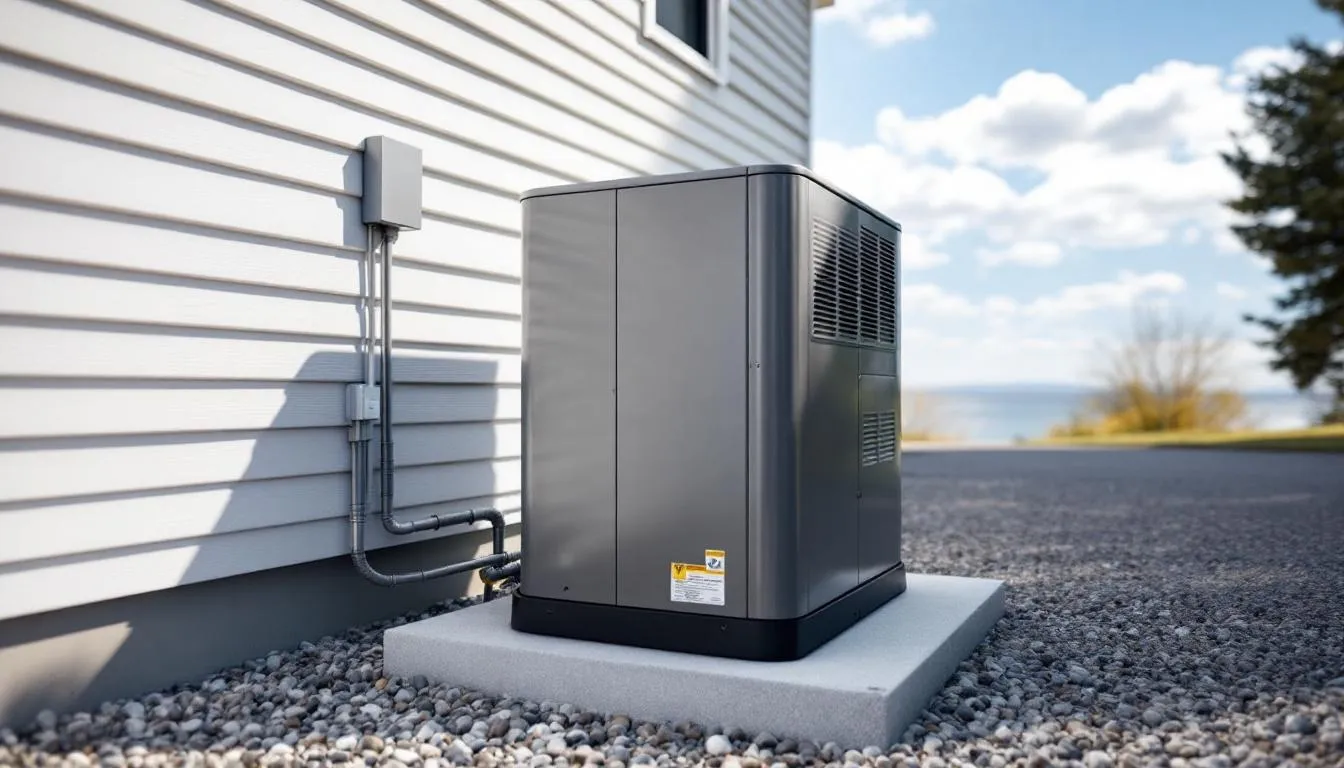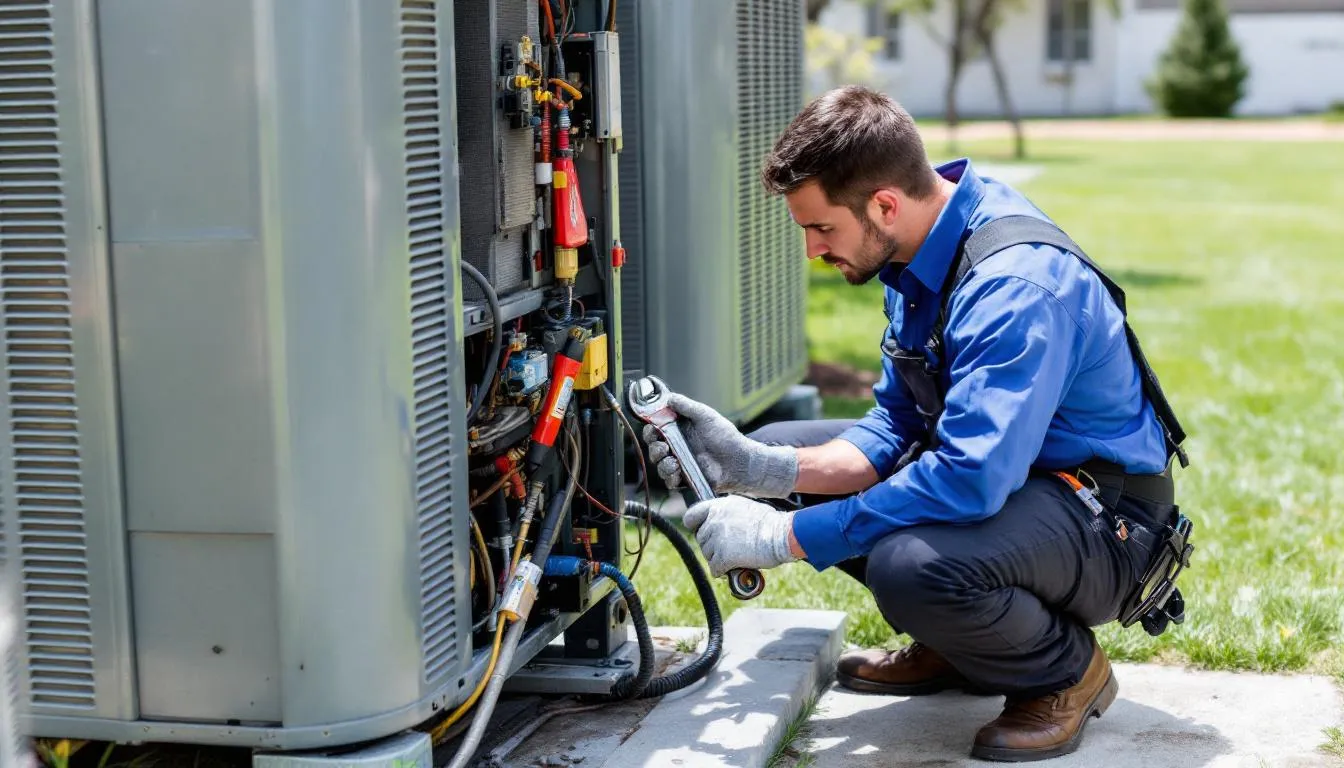Heat and Cooling: Complete Guide to Home Climate Control Systems

Your home’s comfort depends on effective heat and cooling systems that work year-round to maintain the perfect indoor environment. With 25% of global energy production dedicated to building climate control and air conditioning units expected to triple by 2050, understanding your options has never been more important. Whether you’re building a new home, upgrading an aging system, or simply looking to improve energy efficiency, this comprehensive guide will help you navigate the world of heating and cooling technology.
From traditional furnaces and central air conditioning to modern heat pumps and smart thermostats, today’s climate control systems offer unprecedented comfort, efficiency, and control. The right system can dramatically reduce your energy bills while keeping your family comfortable through every season. Let’s explore everything you need to know about heat and cooling systems to make the best choice for your home.
Introduction to Home Climate Control
Home climate control is all about creating a comfortable, healthy indoor environment by using heating and cooling systems designed to regulate temperature, humidity, and air quality. Whether you’re looking to keep your home cozy in the winter or cool during the summer, the right HVAC system is essential for year-round comfort and energy savings.
Energy-efficient heating and cooling units are specifically designed to deliver maximum comfort while minimizing energy use. By investing in a well-designed home climate control system, you can save energy, lower your utility bills, and enjoy a more sustainable lifestyle. HVAC systems—including options like ductless mini-splits and heat pumps—play a crucial part in maintaining the perfect indoor space, adapting to your needs throughout the year.
When selecting a heating and cooling system, it’s important to consider factors such as energy efficiency, cost, and maintenance requirements. Learning about the different types of HVAC systems available can help you find the right fit for your home. With guidance from a knowledgeable dealer or professional, you can get the system that best matches your needs and start experiencing the benefits of a comfortable, energy-efficient indoor environment. The right system not only enhances comfort but also helps you save energy and money, making it a smart investment for any homeowner.
Understanding Heat and Cooling Systems
HVAC systems (heating, ventilation, and air conditioning) serve as the backbone of modern home comfort, regulating temperature, humidity, and air quality throughout your living space. These integrated systems work together to maintain optimal indoor conditions regardless of outdoor weather, ensuring your home remains a comfortable sanctuary year-round.
The fundamental principle behind heating and cooling systems involves the transfer of thermal energy. Heating systems add warmth to your indoor air during cold months, while cooling systems remove heat during summer. Modern HVAC technology has evolved to make this process incredibly efficient, with many systems capable of switching seamlessly between heating and cooling modes as needed.

The global impact of these systems is substantial. Climate control accounts for approximately 40-60% of total energy usage in an average home, making system efficiency a critical consideration for both your wallet and the environment. As urbanization continues and climate change drives more extreme temperatures, the demand for effective heating and cooling solutions continues to grow rapidly.
Today’s systems integrate sophisticated technology including smart thermostats, variable speed compressors, and IoT connectivity. These advances allow homeowners to achieve precise temperature control while minimizing energy consumption, representing a significant improvement over older, less efficient units that operated at fixed speeds and lacked intelligent controls.
Types of Cooling Systems
Central air conditioning systems represent the gold standard for whole-home cooling, utilizing ductwork to distribute cool air throughout your entire living space. These systems feature outdoor compressor units connected to indoor evaporator coils, providing consistent temperature control and the ability to filter and dehumidify incoming air. Modern central AC units achieve SEER ratings between 14-23, with higher ratings indicating superior energy efficiency.
Window air conditioners offer an easy installation solution for cooling individual rooms or smaller spaces. These self-contained units feature built-in thermostat control, timer features, and increasingly, smartphone compatibility for remote operation. While less efficient for whole-home cooling, window units provide an affordable entry point and work well for apartments or homes without existing ductwork.
Portable air conditioning units provide flexibility for cooling specific areas, featuring wheels for easy movement between rooms and exhaust hoses that vent hot air outdoors. These units cool indoor air through the same refrigeration process as larger systems but in a compact, moveable package. They’re ideal for renters or homeowners who need temporary cooling solutions.
Ductless mini-split systems excel at cooling rooms between 500-1700 square feet, offering quiet operation and smart controls without requiring extensive ductwork installation. These systems connect indoor air handling units to outdoor compressors via small conduits, providing zoned cooling that allows different areas of your home to maintain different temperatures according to usage patterns and preferences.
Wall-mounted air conditioners bridge the gap between window units and full central systems, connecting to outdoor compressors while maintaining a more permanent installation. Many modern cooling systems include additional features like built-in dehumidifiers, remote controls, and integration with smart home systems for enhanced convenience and energy management.
Types of Heating Systems
Furnaces remain the most common heating solution for American homes, delivering heat through central heating systems using either oil-forced air or electric models. Gas furnaces can achieve Annual Fuel Utilization Efficiency (AFUE) ratings exceeding 98%, making them incredibly efficient at converting fuel into usable heat. These systems distribute warm air through the same ductwork used by central cooling systems, providing consistent whole-home heating.
Boilers offer an alternative approach through radiant heating and hot water distribution, circulating heated water through radiators or in-floor piping systems. While more expensive to install than forced-air systems, boilers provide even, comfortable heat without the air movement that can distribute dust and allergens throughout your home.
Heat pumps represent a versatile solution that can transfer heat into or out of homes depending on the season, making them effective for both heating and cooling. These systems work by extracting heat from outdoor air (even in cold weather) and concentrating it indoors during winter, then reversing the process for summer cooling. Modern heat pumps maintain efficiency even in sub-freezing temperatures.

Portable space heaters provide targeted warmth for cold spots or entire rooms indoors, offering flexibility and zone heating capabilities. Electric models plug into standard outlets, while some larger units may require dedicated electrical circuits. These units work well as supplementary heating or for warming specific areas without heating your entire home.
Garage heaters come in wall, ceiling, or portable configurations, available in both gas and electric models designed specifically for workshops and utility spaces. These specialized units handle the unique challenges of heating typically uninsulated spaces and can withstand the dust and fumes common in garage environments.
Fire pits and fireplaces add both warmth and ambiance to your home, available in gas, propane, electric, and ventless options. While not primary heating sources, these units create focal points for gathering spaces and can provide supplemental heat during mild weather or power outages.
Dual-Function Heat and Cooling Systems
Heat pumps represent the pinnacle of dual-function climate control, combining air conditioning and heating capabilities in single, highly efficient units. These systems use the same refrigeration technology as traditional air conditioners but include a reversing valve that allows them to switch between heating and cooling modes automatically based on your thermostat settings and seasonal needs.
HVAC split systems offer another approach to year-round climate control, featuring separate indoor and outdoor components that work together to provide both heating and cooling. These systems automatically switch between modes as needed, maintaining your desired temperature regardless of outdoor conditions. The split design allows for quieter indoor operation while keeping the noisier compressor components outside.
Ductless mini-splits provide both heating and cooling without requiring extensive ductwork installation, making them ideal for home additions, older homes without existing ducts, or situations where you want independent climate control for specific zones. Each indoor unit can be controlled separately, allowing family members to customize their comfort levels in different areas of the home.
The energy efficiency benefits of dual-function systems compared to separate heating and cooling units are substantial. By using one system year-round, you reduce installation costs, maintenance requirements, and energy consumption. Modern dual-function systems achieve excellent efficiency ratings in both heating and cooling modes, often exceeding the performance of single-purpose units.
Smart thermostat integration enhances these systems’ capabilities, allowing them to learn your preferences and automatically adjust operation for optimal comfort and energy savings. Advanced features include geofencing that adjusts temperature when you leave or return home, and integration with weather forecasts to pre-condition your home for expected temperature changes.
System Components and Accessories
A complete HVAC system is made up of several key components, each designed to work together to provide efficient heating, cooling, and ventilation for your home. Core elements include air conditioners, heaters, and ventilation systems, all working in harmony to maintain optimal indoor comfort.
To further enhance your system’s performance, a variety of accessories are available. Thermostats—especially programmable and smart models—allow precise control over your indoor climate. Air purifiers and humidifiers can be integrated to improve air quality and maintain healthy humidity levels, making your living space more comfortable and healthier year-round.
Choosing energy-efficient components and accessories is a smart way to reduce energy consumption and lower your utility bills. Homeowners can find a wide range of products designed to meet specific needs and budgets, from advanced air filtration systems to high-efficiency fans and zoning controls. It’s important to select components that are compatible with your existing HVAC system to ensure seamless operation and optimal efficiency.
Investing in high-quality system components and accessories not only boosts comfort but also helps you save energy and money over time. Dealers and HVAC professionals can help you find the right products for your system, offering expert advice on installation and maintenance. With the right combination of components and accessories, you can enjoy a comfortable, energy-efficient indoor space every day of the year.
Energy Efficiency and Smart Features
Energy Star ratings provide standardized measures for comparing heating and cooling equipment efficiency, helping you identify systems that will deliver the best long-term value. Selecting a high-quality product with advanced features can improve reliability and user experience, and may offer access to updates or enhanced technology. Look for SEER ratings of 15 or higher for cooling systems and HSPF ratings of 8.5 or above for heat pumps to ensure you’re getting a genuinely energy efficient system that qualifies for utility rebates and tax incentives.
Smart thermostats and app controls revolutionize system management by allowing remote operation from anywhere with internet access. These devices learn your schedule and preferences, automatically adjusting temperature settings to maximize comfort while minimizing energy use. Many models provide detailed energy usage reports and suggestions for further savings.
Variable speed technology represents a major advancement in HVAC efficiency, allowing systems to adjust their output to match current heating or cooling demands exactly. Unlike older single-speed systems that cycle on and off repeatedly, variable speed units run continuously at lower speeds, providing more consistent temperatures and significantly quieter operation.
Programmable timers and scheduling capabilities let you customize operation around your daily routine, automatically reducing energy consumption when you’re away from home or sleeping. Advanced systems can create different schedules for weekdays and weekends, with some models offering separate programming for each day of the week.
Integration with whole-home air purification systems like PureAir technology transforms your HVAC system into a comprehensive indoor air quality solution. These systems remove pollutants, allergens, and odors while providing climate control, creating healthier indoor environments for your family.
IoT connectivity and smart home integration options allow your heating and cooling systems to work with other connected devices, from voice assistants to home security systems. This integration enables sophisticated automation scenarios, such as adjusting temperature when your security system arms for away mode or coordinating with smart blinds to optimize energy efficiency.
Smart Home Integration
Integrating smart home technology with your HVAC system is a game-changer for comfort, convenience, and energy efficiency. Smart thermostats, for example, can learn your daily routines and preferences, automatically adjusting heating and cooling to keep your home comfortable while saving energy. With remote access via smartphone apps, you can control your system from anywhere—ensuring you always return to a perfectly conditioned home.
Smart home integration goes beyond simple temperature control. Many systems now offer detailed energy usage reports and maintenance alerts, helping you identify opportunities to save energy and avoid costly repairs. As technology advances, features like voice control, geofencing, and integration with other smart devices are becoming standard, making it easier than ever to manage your home’s climate.
Dealers and professionals can help you find the right smart home devices and guide you through installation and setup, ensuring your system is optimized for both comfort and efficiency. With the upcoming 2025 refrigerant transition and ongoing innovations in HVAC technology, smart home integration is set to become an even more important part of home climate control.
By embracing smart home technology, you can enjoy a connected, energy-efficient indoor environment that adapts to your lifestyle—helping you save money, reduce energy use, and experience a new level of comfort in your home.
Installation and Maintenance Considerations
Professional installation requirements vary significantly between system types, with central HVAC systems requiring licensed technicians for proper sizing, ductwork connections, and refrigerant handling. Complex installations ensure optimal performance and maintain manufacturer warranties, while improper installation can lead to reduced efficiency and premature system failure.
DIY-friendly options like window units offer homeowners the ability to install cooling without professional help, typically requiring only basic tools and the ability to support the unit’s weight in a window opening. These systems come with detailed instructions and support brackets, making installation accessible for most homeowners with basic mechanical skills.
Ductwork considerations play a crucial role in system selection, as central systems require extensive duct networks throughout your home, while ductless alternatives eliminate this requirement entirely. Existing ductwork can often be adapted for new central systems, but older ducts may need sealing or replacement to achieve optimal efficiency.
Regular maintenance schedules ensure optimal performance and longevity for all heating and cooling systems. Professional annual inspections typically include cleaning coils, checking refrigerant levels, testing electrical connections, and calibrating controls. This preventive maintenance can extend system life by 5-10 years and maintain peak efficiency throughout the unit’s lifespan.
Filter replacement and system cleaning requirements vary by system type and usage conditions. Standard filters need replacement every 1-3 months, while higher-quality pleated filters may last 6 months. Dirty filters reduce efficiency and can damage system components, making regular replacement one of the most important maintenance tasks homeowners can perform.
Seasonal preparation tips help ensure your heating and cooling systems operate reliably when you need them most. Fall preparation includes testing heating components, replacing filters, and clearing debris from outdoor units. Spring preparation focuses on cooling system readiness, including checking refrigerant levels and cleaning condenser coils.
Cost Factors and Financial Incentives
Initial purchase costs for different system types and sizes vary dramatically, with window units starting around $200-500, while complete central HVAC systems can range from $3,000-15,000 depending on size, efficiency, and features. Heat pumps typically cost more upfront than traditional systems but offer long-term savings through dual-function capabilities and high efficiency.
Operating costs and energy consumption comparisons reveal significant differences between system types and efficiency levels. High-efficiency systems may cost 20-50% less to operate annually compared to older, less efficient units. Variable speed systems and smart controls can further reduce operating costs by optimizing system operation for actual heating and cooling needs.
Available rebates and tax incentives can substantially reduce the cost of new energy efficient systems, with some qualifying systems eligible for up to $2,000 in combined federal and utility rebates. These incentives often apply to systems that exceed minimum efficiency standards, making high-performance units more affordable while encouraging energy conservation.

Financing options and payment plans from manufacturers make system upgrades more accessible, with many companies offering 0% interest financing for qualified buyers. These programs allow homeowners to spread system costs over several years while immediately benefiting from improved efficiency and reduced utility bills.
Long-term savings from energy efficient systems often exceed the additional upfront investment within 5-10 years, particularly in climates with extreme temperatures. When combined with improved comfort, enhanced reliability, and potential home value increases, high-efficiency systems represent excellent long-term investments.
Warranty options including 10-year unit replacement and heat exchanger coverage provide peace of mind and protect against unexpected repair costs. Extended warranties may cover parts and labor for longer periods, though proper maintenance remains essential for maintaining warranty coverage and system performance.
Troubleshooting Common Issues
Even the most advanced HVAC systems can encounter issues from time to time. Common problems include poor airflow, uneven heating or cooling, and unexpectedly high energy bills. Fortunately, many of these issues can be addressed with a few simple troubleshooting steps.
Start by checking your air filters—clogged or dirty filters can restrict airflow and reduce system efficiency. Inspect your ductwork for leaks or blockages that might be affecting air distribution. Adjusting your thermostat settings or ensuring it’s functioning correctly can also resolve many comfort issues.
Regular maintenance is key to preventing problems and keeping your system running efficiently. Scheduling annual check-ups with a professional dealer or HVAC technician can help catch small issues before they become major repairs. These experts can also provide guidance on troubleshooting and maintenance, ensuring you get the most out of your heating and cooling system.
By learning about common HVAC issues and how to address them, you can take control of your home’s climate and enjoy a comfortable, energy-efficient indoor space. Don’t hesitate to reach out to a trusted dealer or professional for help—prompt attention to problems will help you save energy, reduce costs, and maintain a healthy home environment.
Choosing the Right System for Your Home
Home size and square footage considerations determine the heating and cooling capacity needed for adequate climate control. Systems that are too small will struggle to maintain comfortable temperatures, while oversized systems cycle on and off frequently, reducing efficiency and comfort. Professional load calculations account for factors beyond square footage, including insulation levels, window types, and local climate conditions.
Climate zone factors significantly affect heating and cooling needs, with different regions requiring different system capabilities and features. Northern climates may benefit from high-efficiency heating with moderate cooling capacity, while southern regions need robust cooling systems with minimal heating requirements. Moderate climates often work best with heat pumps that provide efficient year-round operation.
Existing ductwork and infrastructure requirements influence system selection and installation costs. Homes with well-designed duct systems can easily accommodate central heating and cooling systems, while homes without ducts may find ductless mini-splits or window units more practical and cost-effective solutions.
Budget constraints and financing considerations help narrow system choices to options that fit your financial situation. Remember to factor in both purchase price and operating costs, as more efficient systems often provide better long-term value despite higher upfront costs. Available rebates and financing can make premium systems more affordable.
Energy efficiency goals and environmental impact preferences guide system selection toward options that minimize energy consumption and environmental impact. Heat pumps powered by renewable electricity offer the lowest carbon footprint, while high-efficiency gas systems provide good performance in areas where electricity comes from fossil fuels.
Professional consultation and load calculation importance cannot be overstated when selecting heating and cooling systems. Qualified HVAC contractors use specialized software to calculate exact heating and cooling loads based on your home’s specific characteristics, ensuring proper system sizing and optimal performance. This professional input helps avoid common mistakes that can compromise comfort and efficiency.
The right heat and cooling system transforms your home into a comfortable, efficient sanctuary that adapts to your needs throughout the year. By understanding your options and working with qualified professionals, you can find the perfect system that balances comfort, efficiency, and cost-effectiveness. Whether you choose a traditional split system, an innovative heat pump, or a ductless solution, investing in quality heating and cooling equipment pays dividends in comfort, energy savings, and home value for years to come.
Take the time to research your options, get multiple quotes from qualified dealers, and consider both immediate needs and long-term goals. The perfect heating and cooling system is out there – one that will keep your family comfortable while helping you save money and reduce your environmental impact. When making your decision, be sure to consider the quality and reliability of the product, and look for options that offer product registration or upgrade benefits for ongoing support and updates. Start your journey toward better home comfort today by consulting with local HVAC professionals who can help you find the ideal solution for your unique situation.
Conclusion and Future Developments
As we look to the future of home climate control, the focus on energy efficiency, smart technology, and sustainability continues to grow. Homeowners now have more options than ever to create comfortable, healthy indoor environments while saving energy and reducing costs. From advanced heat pumps and ductless systems to smart thermostats and integrated air quality solutions, the right heating and cooling system can transform your home into a sanctuary of comfort and efficiency.
The upcoming 2025 refrigerant transition will bring even more environmentally friendly and energy-efficient products to the market, helping homeowners further reduce their carbon footprint. Innovations in smart home integration and IoT connectivity will make it easier to control and optimize your HVAC system, ensuring you always get the best performance and savings.
Staying informed about new technologies and working with knowledgeable dealers and professionals will help you find the right solutions for your home. By investing in high-quality, energy-efficient systems and embracing the latest advancements, you can enjoy year-round comfort, lower utility bills, and a healthier indoor environment for years to come.
The future of home climate control is bright—full of opportunities to enhance comfort, save energy, and make your home a better place to live. Now is the perfect time to learn about your options, upgrade your system, and experience the benefits of modern heating and cooling technology.
